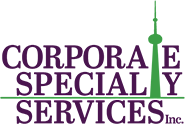Can Employee Productivity Soar when Facilities are Clean?
- By Steve Martin
- •
- 16 Sep, 2016

Commercial cleaning services are a smart investment in employee health and safety. Budget dollars spent on facility maintenance will more than pay for themselves. Healthy employees are happier and their motivation and productivity soars, vastly improving your bottom line.
In 2015, full-time workers were off sick an average of 7.4 days. The economic cost of sick days due to salary costs was about $16.6 billion
in 2011. The cost of replacement workers makes that cost even higher. The main reasons volunteered for taking the day off:
- Colds
- Flu
- Headaches
- administrative costs (e.g., time spent finding a replacement)
- a reduction in employee morale (e.g., from increased workload)
- a reduction in productivity (e.g. delays, missed deadlines)
- a reduction in customer satisfaction
Causes of Absenteeism
Dirty work surfaces are a significant cause of work absenteeism. Workers spend about 1/3 of their life at work. During the course of a day, many surfaces are touched:
- door knobs
- desk tops
- phones
- coffee pots
- paper work
- flooring
Causes of Presenteeism
Sick building syndrome causes absenteeism but it also causes 'presenteeism' (employees who are physically present but are, due to a physical or emotional issue, distracted to the point of reduced productivity). A number of offenders can contribute to this syndrome:
- mold spores due to pipe breaks, water leaks and roof leaks
- a poorly maintained HVAC system resulting in indoor air contaminants such as lead dust and VOC's
- dust mites in neglected areas such as vent covers, blinds and fans
- carpeting which releases VOC's and accumulates mold spores and bacteria
- headaches
- dry coughs
- nasal allergies
- itchy, dry skin
- fatigue
- dizziness
- nausea
- difficulty concentrating
- it reduces or eliminates slipping and tripping hazards
- it results in the reduction of workplace exposure to hazardous substances (dust, vapors)
- it reduces sick days by improving hygienic conditions
Improving Health and Productivity
One of the greatest areas of control an organization has over lost productivity due to employee health issues is the maintenance and cleaning of the work facility. Facility managers willing to spend budget dollars to keep work areas clean, remove agents causing illness. But more importantly, this action lets their employees know their health and well-being is valued.
Healthy employees = Productive employees
Valued employees = Motivated and productive employees
Spending on regular facility maintenance is a win-win proposition for the company. Employee productivity levels are boosted - increasing profits. At the same time facility productivity losses are minimized - reducing profit loss. Employees are healthier and happier, producing a financially healthier facility.
Healthy employees = Productive employees
Valued employees = Motivated and productive employees
Spending on regular facility maintenance is a win-win proposition for the company. Employee productivity levels are boosted - increasing profits. At the same time facility productivity losses are minimized - reducing profit loss. Employees are healthier and happier, producing a financially healthier facility.


